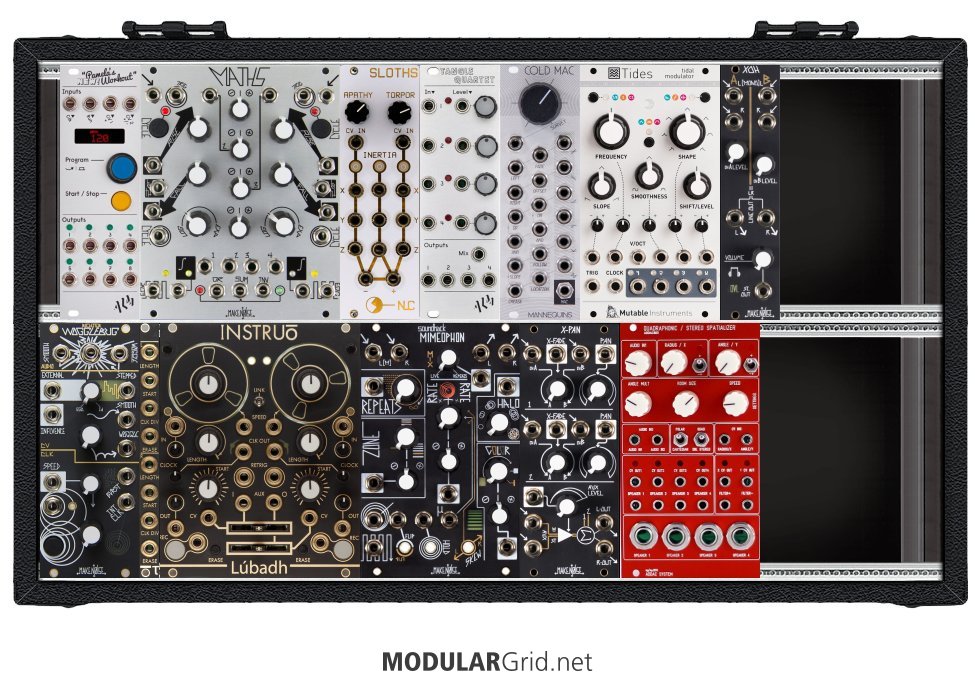
Hi MG,
I recently dipped my toes into modular synthesis and I'm looking for some professional advice before I go too wild. It'll be important to note that I'm coming from a background in tape manipulation and 4-channel sound out of Max/MSP and I'm trying to replicate some of those characteristics in a rack. Now, I know some want to ask me: why not keep using Max? But, come on! You know why. You and I both get that same buzz when we get a new module in the mail.
Keep in mind, I'm not a musician, not trying to be one, and not trying to make music. I'm just trying to manipulate tape sound spatially using modular. So, don't be alarmed that the only dedicated audio source in this rack is the Instruo (I've done that on purpose).
Pictured above is a long-term wishlist. I already have Pam's, Sloths, Tangle Quartet, Lubadh, and XOH as a small, yet heinously expensive, start. The idea is to use the Lubadh as the only source of audio and to run it through a Sloths/Tides modulated x-pan and then a Sloths/Tides modulated ADDAC to move sound very slowly in a 4-channel environment. All the other goodies in the rack could provide modulation for the Mimeophone, the Lubadh itself, and a future stereo phaser of some kind (the Modcan Dual Phaser's price is a little bananas, alternatives anyone?).
Needless to say, I have a few questions. Do I have redundancies? Gaping holes? Could I be doing anything cheaper? Based on this rack, where are my gaps in knowledge? Also, I know that Maths and Cold Mac are both crazy deep. Is both overkill? I know maths is semi-standard but that surveillance mode on Cold Mac is pretty cool right? Tell me I'm dead wrong and let's keep that cost down! Also, any recommendations for crazy stuff? I was looking at the ADDAC300 to suck power from the Xpan and make it go nuts and that ERD unit that lights incense because cool reasons. Let's bring that cost right back up!
I've been creeping around these boards for a bit now and I know on everyone's first rack they ask about redundancies, gaping holes, and price. All great questions! With that in mind my biggest question is (admittedly my most obnoxious): What other questions should I be asking myself and you guys?
I'm psyched and nervous to be posting, but definitely more psyched than nervous to be hearing from people! Thanks any/everyone!
-nm
